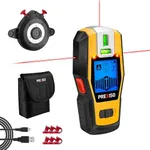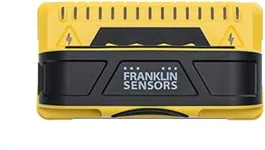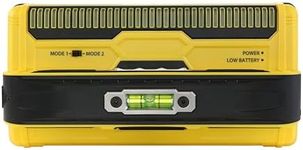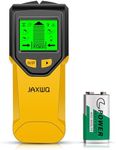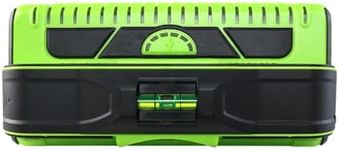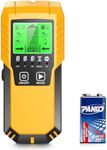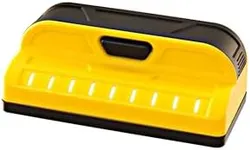Buying Guide for the Best Stud Finders
Choosing the right stud finder can make a huge difference when you’re hanging shelves, TVs, or artwork on a wall. Stud finders help you locate studs (the wooden framework) behind your walls, so you know where it’s safe and secure to drill or nail. To pick the best stud finder, you should consider how it works, what types of walls you may use it with, and what kinds of features suit your needs. Reading product details and understanding the key specifications will help you find one that’s easy to use and accurate for the tasks you plan to tackle.Detection TechnologyDetection technology describes how the stud finder locates studs behind your walls. The two main types are magnetic and electronic. Magnetic stud finders use magnets to detect the metal fasteners in studs, while electronic stud finders sense changes in wall density to find the edges or center of a stud. Magnetic models are simple and don’t need batteries, but may be less accurate and require patience as you slide them slowly. Electronic types are generally more precise and offer more features, but typically need batteries and may take a bit more learning. If you’re handling basic tasks and want something easy, magnetic could be enough, but for greater accuracy and confidence—especially with thicker or denser walls—consider electronic models.
Detection DepthDetection depth is how deep a stud finder can identify studs or other objects behind the surface of your wall. Entry-level stud finders usually detect up to 0.75 inches deep, suitable for most interior residential walls. More advanced models offer deeper detection, sometimes up to 1.5 inches or more—helpful if your walls are thick, have paneling, or layers of paint. Match the detection depth to the usual wall type in your home. If you have standard drywall, basic depth may be fine; for denser or older walls, look for greater depth.
Modes and Object TypesMany stud finders come with multiple modes: they may find not only wooden studs, but also metal, live wires, or even pipes. Some have dedicated settings for different materials. This feature is important if you’re worried about hitting wires or metal in the wall by accident. Simple models focus just on wood studs, while more advanced units let you toggle between wood, metal, and AC detection. If you often drill or hang heavy things in different areas of your house, having multiple modes adds safety and usefulness.
Display and IndicatorsThe way a stud finder shows you where the stud is can make a job easier or harder. Some have a simple light or sound, while others feature clear LED or LCD screens showing the stud’s position or even animated guides. A larger or clearer display is more user-friendly, especially if your lighting isn’t great or you need precision. For quick, occasional jobs, a basic indicator might be enough, but if you want confidence and clarity, especially for first-timers, opt for a stud finder with an easy-to-read display.
CalibrationCalibration is the process a stud finder uses to set itself before analyzing the wall. Some models calibrate automatically with each use, while others require manual calibration every time. Automatic calibration is easier and reduces mistakes. If you want a smooth, foolproof user experience, especially if you’re not experienced, seek a stud finder that calibrates automatically.
Size and ErgonomicsThe size and shape of a stud finder affect how comfortable it is to hold and whether you can use it in tight spaces. Compact models are good for small areas or crowded workspaces, while larger units may have bigger screens or more advanced features. If you plan to use your stud finder for long jobs or in areas like corners and around trim, look for a lightweight, slim-shaped device that feels comfortable in your hand.

